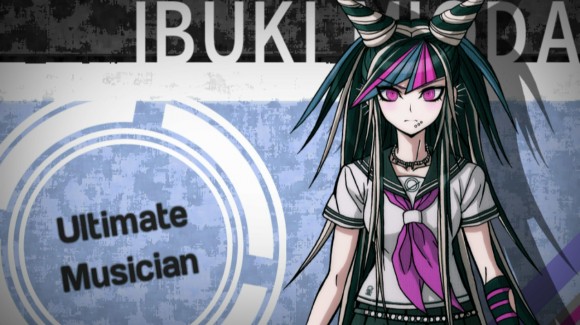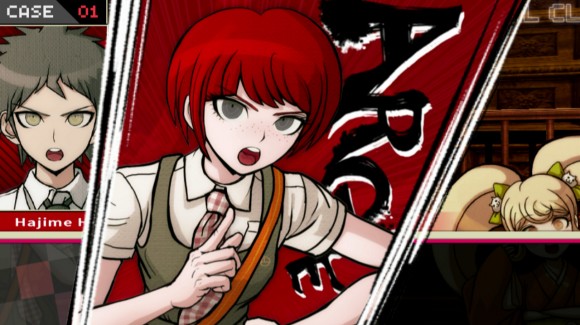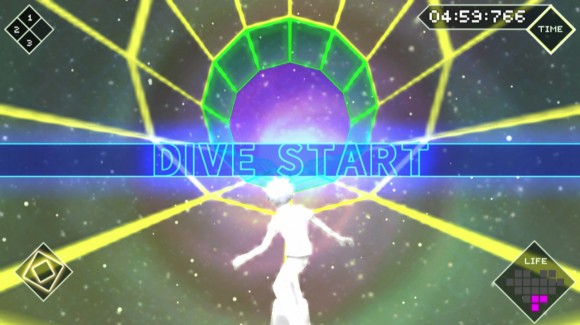Welcome back boys and girls to another semester at Hope’s Peak Academy. It’s time to get acquainted with a new class of Japan’s very best and brightest “Ultimate” students. As you become familiar with their various over the top quirky, silly, fun personalities, you’ll also watch while they take a class trip to a lovely tropical paradise then proceed to brutally murder one another. This is of course a perfectly normal thing in the PSVita sequel to Spike Chunsoft’s Danganronpa: Trigger Happy Havoc.
Danganronpa 2: Goodbye Despair places you in the role of Hajime Hinata as he and his 15 classmates explore the mysterious Jabberwock Island. Here they find their school trip advisor, a loving pink bunny named Usami who’s only there for their well being. Sure it’s a little suspicious everyone woke up with amnesia on a mysterious island during what was supposed to be their first day of school, but who cares? It’s paradise. Time to enjoy good food, swim in the warm ocean, and have a good time. Until of course a psychotic black and white bear named Monokuma shows up and informs them they need to start deep sixing one another if they ever hope to escape the island.
For those not quite in the know, Danganronpa typically takes a gaggle of teenagers known as “Ultimates”, that’s the very best in each of their expert fields from entertainment, to athletics, even crime, and traps them in a setup reminiscent of Battle Royale or Hunger Games. The key difference in Danganronpa is rather than an all out brawl, each killer has to be very clever about their premeditated murders and make sure they don’t get caught. Once someone has been killed, it’s up to you and the survivors to investigate the death, then eventually unravel the truth of each incredibly complicated murder plot in a debate forum slash courtroom setting.
Sequels, I find, often land in one of two places. The mechanics and story are either exactly the same in a “if it ain’t broke, don’t fix it” approach that works temporarily until the series grows stale, or the mechanics are adjusted so much the game feels near unrecognizable. There’s a rare middle ground where a game feels like it’s been tweaked and improved just enough, but still remains true to the gameplay established in its predecessor, and Dangan Ronpa 2 nicely fits into this third category. There’s just enough changes in the artwork, mechanics and story it feels fresh, but not so much it no longer feels like the original or that anything is broken.
Artwork and environments are both improved from the last game, with Jabberwock Island being a bit prettier to look at and more open than the cramped, often times monochrome environments of Trigger Happy Havoc’s environments. The character artwork pops out a little more and feels just a tad more realistic, while also still retaining the idea each individual student needs to fit into their defined stereotype. A lot of Trigger Happy Havoc’s music tracks return, with a few new ones here and there tossed into the mix.
The most noticeable changes in Danganronpa 2: Goodbye Despair come in the form of the series’ main event: The class trials where you have to sniff out the killer among your classmates and condemn them to death. For the most part, your job in Trigger Happy Havoc was to sit through the multiple round-robin debates of the class trial and expose holes in different people’s testimonies with “truth bullets.” There were also tons of other minigames in each class trial you had to complete in order to successfully get to the end. Goodbye Despair revisits many of Trigger Happy Havoc’s debate modes, however nearly all of them have been tooled up with the overall difficulty of the game turned up.
To put it simply, Trigger Happy Havoc kept on piling different game modes in the class trials until it got a little overwhelming towards the end of the game. Goodbye Despair… Picks up exactly where Trigger Happy Havoc left off. Even if you were kind of an expert (or an ultimate, eh? EH?) at the last game, Danganronpa 2 will still manage to challenge you. It’s not like most visual novels, including other investigative games such as Ace Attorney where you just sit through the story and sometimes pick the right answer or evidence, in Danganronpa 2 you really have to keep on your toes and keep up with the gameplay or you’ll find yourself in real danger of losing.
It would take too long to explain all the changes, but some of the key ones come from the Nonstop Debates. In the prior game you generally only had to launch your truth bullets to destroy lies and contradictions while your classmates deliberated. This still happens in 2, however now you also have to use your judgement to find statements you actually agree with from your peers and fire off a truth bullet that concurs with them. Your Closing Argument, a comic book you construct at the end of each case, formerly just required you to put the right sequence of events in order. Now you get a “deck” of cards that’s both a mix of information relevant to the case and irrelevant memories of the events around it, and placing a card in the wrong place will do a portion of damage to you.
There are a few new game modes as well. The most stand out one is the Rebuttal Showdown. Should you make a statement another student doesn’t agree with they will complain, loudly, and essentially call you a dumbass. This starts a one on one battle where you have to argue with them and they’ll fight back. Your words literally cut deep as you find yourself in a rapid, button mashing battle as they scream at you and you yell back until you get the chance to drive your point home with a good “sword” slash. This game also sees the introduction of the Logic Dive, a snowboarding minigame reminiscent of Sonic the Hedgehog 2’s special stages, where Hajime critically works through his thoughts while jumping off ramps inside a 3D cylinder. The game’s new challenges take some getting used to, even if you’re a veteran of the last game.
In addition to ratcheting up the difficulty the game has also turned up the comedy and over-the-topness. You’re going to be faced with a wide range of bizarre things in this game, from giant killer robotic mascots, to magical girls, about ten times the fanservice and a weird tamagotchi like pet for you to take care of. There’s also a ton of fourth wall breaking moments, such as one portion of the game that allows you to manipulate a sitcom laugh track, and another portion that gives you the option to randomly (and with no leads) “guess” the killer threatening to erase all your save files should you get it wrong.
A big draw for me in Trigger Happy Havoc was the dark and twisted storyline, attempting to unravel an overarching mystery that made little sense. Goodbye Despair promises to be even more twisted than the last, and even plays up on the knowledge you have of the last game to play with your expectations of this one. You don’t have to have played Trigger Happy Havoc to fully understand Goodbye Despair, the good news is the new class is at the same exact starting point as the player; trapped and confused. However knowledge of the first game does add an extra layer to the plot turns, comedy and mindfucks. Hope and Despair are two big themes in the Danganronpa series, and in Trigger Happy Havoc each instance of Hope was used to drive in deeper that dagger of despair. This game on the other hand has a very messed up, oddly Jungian approach to what exactly “hope” means. There’s no real such thing as hope or despair here, just twisted perversions of hope, and it’s a nice way to play with the themes without also growing stale.
The cast of characters in this game, like the last, show themselves to be quite strong and memorable. There’s Chiaki the Ultimate Gamer, who uses her knowledge of video games to be an ace detective, Gundham the Ultimate Breeder who’s read one too many fantasy mangas and has an army of furry friends, Ibuki the Ultimate Musician who gives ADHD a new meaning and Teruteru the Ultimate Cook who’d sleep with anything that moves, and nine others to gallivant around with. Though each Ultimate archetype is still key to their characterization, the writing fleshes them out a bit better this time around as well, and in the class trials rather than everyone just being combative, contrary or moronic, it feels like there’s more common sense to go around the room and more chances for group consensus. Part of the fun is getting to know their individual idiosyncrasies, hanging out with them, fighting with them during the trials and seeing them during the scripted events; at least until one of them ends up a corpse anyway.
A “good” sequel to me returns to what made its preceding title so engaging, returning to familiar themes and elements, while at the same time not being stale and introducing just enough that the audience can remain uniquely entertained but not overwhelmed. Danganronpa 2: Goodbye Despair is a very strong sequel, sure not to disappoint any fans of Danganronpa: Trigger Happy Havoc. It might not be a great jumping point for brand new players interested in the series, but you also won’t be completely lost if you decide to start here. If you’re in the mood for a title that’s a little zany and a lot bloody, with a few puzzles and a surprising amount of twitch action for a visual novel, Danganronpa 2: Goodbye Despair is the title for you.
This game was reviewed using pre-release code provided to us by the publisher.











